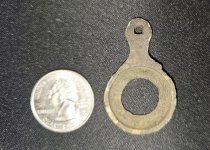As the title suggests I am looking for advice on a better way to prospect. Spending all day panning with my garret super sluice kicks my butt, and I'm not able to really process that much material. I could switch to a smaller, lighter pan; but I don't think I could process as much dirt in the same amount of time. I've been looking at Gold Hog's Hog Pan, their new Flow Pan and Fossicker's Pyramid Pro Pan. I love Gold Hog's products and own a bunch of it. The Hog Pan is expensive and seems like it would kick my butt more than my super sluice, the flow pan seems like it would be tricky with super fine gold. The Pyramid Pro Pan seems like it would be the best option of the 3 for me. I want to be able to test an area using 5 gallon buckets as a test, instead of a pan or 2. Anyone have any experience with any of those mentioned, or advice on how to prospect more efficiently in general?
Amazon Forum Fav 👍
Upvote
0





